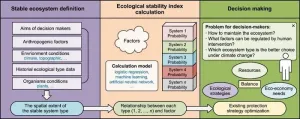(Press-News.org) SAN ANTONIO (Sept. 1, 2023) — What initiates chemical intolerance (CI)? In a newly released survey of thousands of U.S. adults, respondents most frequently cited exposures to biological sources, such as mold and algae “blooms,” and/or fossil fuels, their combustion products and synthetic chemical derivatives such as pesticides, plastics and persistent organic pollutants.
It's an issue in the news, as toxic mold spawned by the moisture left behind by flood waters from Hurricane Idalia could lead to severe health problems for people who suffer from chemical intolerance. This mold also could initiate the condition in some individuals.
“Everyone should avoid prolonged exposure to mold whenever possible,” said physician-researcher Claudia Miller, MD, MS, from The University of Texas Health Science Center at San Antonio, also called UT Health San Antonio. “Research has increasingly shown that toxic mold is much more dangerous than was previously recognized.”
In the survey, published in the journal Environmental Sciences Europe, 17.5% of participants who attributed their illness to an initiating event cited mold exposure as the perceived cause of their chemical intolerance. CI is estimated to afflict up to 20% to 30% of Americans, Miller, senior author of the study, said.
Participants were queried about antibiotic use, as well. According to the results, prolonged courses of antibiotics were associated with an increased risk of CI.
The survey data also indicate that with each additional initiating exposure respondents can recall, the odds of their reporting CI nearly triple.
“With climate change contributing to more severe storms and more intense flooding worldwide, the danger posed by toxic mold is likely to increase dramatically in the near future,” Miller said. “As mold exposure is known to be a major initiator, the likelihood of more and more people with chemical intolerance is also unfortunately on the rise."
TILT
The study furthers understanding about how a two-stage disease process called TILT (toxicant-induced loss of tolerance) begins. The survey asked 10,981 people to state their self-perceptions about the events that began the downward spiral through TILT and into chemical intolerance.
“TILT can develop rapidly, for instance after a pesticide exposure, or gradually if someone is working or living in a setting such as a moldy building,” Miller said. She first proposed TILT in 1996 and is professor emerita of family and community medicine at UT Health San Antonio.
Unknown origins
“Initiating events commonly go unrecognized and therefore unreported, leaving triggers and symptoms as the only documented components,” Miller said. “This has thwarted our understanding of the actual causes of TILT.”
Participants completed an 80-question online survey called the Personal Exposure Inventory. It included items concerning individuals’ medical diagnoses and personal exposures including antibiotic use.
Chemical intolerance was assessed using the Quick Environmental Exposure and Sensitivity Inventory (QEESI©) developed by Miller 25 years ago. It is a validated, self-administered questionnaire now used worldwide to differentiate individuals with CI from the general population. One-fifth of survey respondents met the QEESI criteria for chemical intolerance.
Toxic mold
Exposure to mold was the most frequently mentioned initiating event on the Personal Exposure Inventory. “In recent years, global warming has led to more rainfall, floods, hurricanes, roof leaks and water intrusion, resulting in increased mold growth indoors,” said paper co-author Raymond F. Palmer, PhD, a biostatistician and professor of family and community medicine at UT Health San Antonio.
Mold was followed in rank order by exposures to pesticides (cited by 13.8% of respondents), medical/surgical procedures (12.6%), remodeling/new construction (12.0%), fires/combustion products (7.2%) and breast implants (1.8%).
Antibiotics
Respondents answered questions pertaining to how many courses of antibiotics they had completed for specific types of infections. Antibiotics prescribed for infections categorized as skin, tonsil, gastrointestinal, prostate, sinus, wound and pneumonia were most strongly associated with chemical intolerance.
“Our search for the underlying causes of CI represents a much-needed addition to the CI/TILT literature, whose principal focus has been on triggers that elicit CI symptoms from day to day with no attempt to determine what initiated TILT,” Miller said.
'A cohesive narrative'
“Taken together, our data support the idea that the person who reports multiple symptoms, multiple intolerances and recurrent infections as well as a history of exposure events is sharing a cohesive narrative, one that points to physiological (as opposed to psychosomatic) explanations of their oft-confusing complaints,” she said.
Although certain exposures such as medical/surgical procedures may be difficult to avoid, reducing exposures to contaminants related to pesticide use, new construction/remodeling and mold is possible and should be the focus of efforts to prevent future CI/TILT, the authors wrote.
Digging in
Finally, they encourage practitioners who see patients with medically unexplained symptoms — currently one in four primary care patients — to consider administering the QEESI. “‘TILTed’ individuals who report brain fog, memory, mood and concentration difficulties often receive referrals to psychiatrists, psychologists or social workers who explore their psychosocial environments but do not ask about changes in their actual — physical and chemical — environments,” Miller said. “If initiating exposures such as pesticides, toxic mold, implants and combustion products are not stopped, sensitivities can spiral out of control.”
Teaching in schools of medicine, public health, architecture and engineering has not kept pace with these toxicants, many of which are new to the planet since World War ll, Miller noted. This is exacerbated by energy conservation efforts that have increased exposures to indoor air toxicants, she said.
Marilyn Brachman Hoffman
In their acknowledgments, the authors “thank the Marilyn Brachman Hoffman Foundation for generously funding this study and Marilyn Hoffman for her prescient bequest prioritizing research on toxicant-induced loss of tolerance. We are deeply grateful to the patients who participated in this groundbreaking study.”
Hoffman’s bequest specified research on TILT. “She suffered terribly from chemical, food and drug intolerances herself, but especially from not being believed by family members and her doctors,” Miller said. “She was a citizen-scientist who read all my papers and book, “Chemical Exposures: Low Levels and High Stakes,” co-authored with Nicholas Ashford, PhD, JD, of the Massachusetts Institute of Technology.
“More than anything, Mrs. Hoffman wanted to discover the biomechanism for TILT,” Miller said. “She knew that it was essential for helping patients like herself. Her bequest has led to publication of the biomechanism for TILT in a series of papers over the past two years in Environmental Sciences Europe, a journal read by regulatory toxicologists around the world.”
If you suspect that you or a loved one has developed chemical intolerance or TILT, answer this brief, three yes-or-no question screening test, called BREESI. A positive response to any of the questions should lead to taking the more extensive, validated diagnostic questionnaire, the QEESI, or Quick Environmental Exposure and Sensitivity Inventory. People who have high scores on the QEESI are seen as likely to be chemically intolerant and are encouraged to share the information with their health care providers.
What Initiates Chemical Intolerance? Findings from a Large Population-Based Survey of U.S. Adults
Claudia S. Miller, Raymond F. Palmer, David Kattari, Shahir Masri, Nicholas A. Ashford, Rodolfo Rincon, Roger B. Perales, Carl Grimes, Dana R. Sundblad
First published: Aug. 14, 2023, Environmental Sciences Europe
https://enveurope.springeropen.com/articles/10.1186/s12302-023-00772-x
The University of Texas Health Science Center at San Antonio (UT Health San Antonio) is one of the country’s leading health science universities and is designated as a Hispanic-Serving Institution by the U.S. Department of Education. With missions of teaching, research, patient care and community engagement, its schools of medicine, nursing, dentistry, health professions, graduate biomedical sciences and public health have graduated more than 42,300 alumni who are leading change, advancing their fields and renewing hope for patients and their families throughout South Texas and the world. To learn about the many ways “We make lives better®,” visit UTHealthSA.org.
Stay connected with The University of Texas Health Science Center at San Antonio on Facebook, Twitter, LinkedIn, Instagram and YouTube.
END
Toxic molds, fossil fuels, antibiotics linked to chemical intolerance: Survey
In Idalia’s wake, harmful mold poses major health risk
2023-09-01
ELSE PRESS RELEASES FROM THIS DATE:
nTIDE August 2023 Jobs Report: Record-breaking employment trend continues for people with disabilities
2023-09-01
East Hanover, NJ – September 1, 2023 – Labor Day weekend brings more good news for people with disabilities, with record-breaking highs for labor force participation and employment-to-population ratio, according to today’s National Trends in Disability Employment – semi-monthly update (nTIDE), issued by Kessler Foundation and the University of New Hampshire’s Institute on Disability (UNH-IOD). In comparison, both indicators declined slightly for people without disabilities.
Month-to-Month nTIDE Numbers (comparing July 2023 to August 2023)
Based on data from the U.S. Bureau of Labor Statistics (BLS) Jobs Report released ...
Air pollution has decreased across the US, but new Yale research finds health burdens remain unequal among racial groups
2023-09-01
New Haven, Conn. — Health benefits that have resulted from reductions in fine particulate air pollution aren’t distributed equally among populations in the U.S., a new Yale-led study finds. Racial and ethnic minorities — and Black people in particular — still experience disproportionately high rates of cardiovascular disease-related deaths caused by exposure to fine particulate matter, according to the research.
The findings were published Aug. 31 in Nature Human Behavior.
Fine particulate matter, also known as PM2.5, consists of particles or droplets smaller than 2.5 micrometers in diameter, or ...
Precarious employment conditions can increase risk of early death
2023-09-01
People without a secure job contract can reduce their risk of premature death by 20 per cent if they gain permanent employment, a study from Karolinska Institutet published in The Journal of Epidemiology and Community reports. According to the researchers, the results indicate that job security on the Swedish labour market needs to improve.
Precarious employment is a term that is used to describe jobs with short contracts (e.g. temping), low wages and a lack of influence and rights, all of which lead to a working life without predictability and security.
In the present study, the researchers have examined how this affects the risk of death.
“This is ...
Alaska scientists heading to Greenland for glacier research, museum project
2023-09-01
University of Alaska Fairbanks scientists will make several trips to Greenland over two years to study how meltwater and the ocean affect glacial ice loss.
The four-year research project, funded by a $565,000 National Science Foundation grant, will create a traveling museum exhibit about the drivers of Arctic climate change. The exhibit will appear first at the University of Alaska Museum of the North, likely in 2026.
Ice loss from the polar ice sheets is the largest anticipated contributor to global mean-sea-level rise in the coming century. Scientists need to better understand glacier behavior to improve predictions of sea-level rise.
At the study’s conclusion, ...
Native American patients were sicker and more likely to die during the COVID-19 pandemic, UNM researchers find
2023-09-01
When the COVID-19 pandemic swept into New Mexico in the spring of 2020, seriously ill patients from all over the state were brought to The University of New Mexico Hospital in Albuquerque, where many wound up in intensive care, breathing with the help of ventilators.
Early on, researchers from the UNM Center for Global Health launched a study of hospitalized patients to gauge the severity of symptoms from the infection, gathering data on 475 patients from April 2020 through December 2021.
In paper published this week in PNAS Nexus, ...
New research explains “Atlantification” of the Arctic Ocean
2023-09-01
New research by an international team of scientists explains what’s behind a stalled trend in Arctic Ocean sea ice loss since 2007. The findings indicate that stronger declines in sea ice will occur when an atmospheric feature known as the Arctic dipole reverses itself in its recurring cycle.
The many environmental responses to the Arctic dipole are described in a paper published online today in the journal Science. This analysis helps explain how North Atlantic water influences Arctic Ocean climate. Scientists call it Atlantification.
The research is led by professor Igor Polyakov of the University of Alaska Fairbanks College of ...
Landscape-based methodology reveals ecological stability in the Qingzang plateau
2023-09-01
In a groundbreaking study published in Volume 17 of the journal Environmental Science and Ecotechnology, researchers from the Chinese Academy of Sciences introduced a landscape-oriented framework to assess ecological stability in China's Qingzang Plateau (QP). The QP demonstrated a medium-high stability level with minimal changes in recent years. Ecological stability involves understanding changes in ecosystem components over time, with two major concepts explored: systems close to equilibrium and non-equilibrium behavior. Despite lacking a consensus on the definition of "ecological stability", stability indices ...
Research explores why daughters in Chinese families of son preference fail to break from sustained exploitation
2023-09-01
New research from Lancaster University Management School (LUMS) unveils the extent of sustained exploitation within many Chinese families that have a clear preference for sons over daughters – and why daughters can stay ‘trapped’ in this situation throughout their lives.
The new study explores Chinese families that have a strong preference for sons, where daughters are expected to make substantial financial or labour contributions to their parents before and after marriage– often to subsidise the schooling and living ...
Adding immune modulator to targeted therapy does not improve survival in difficult-to-treat thyroid cancer
2023-09-01
Results of a multicenter phase II clinical trial led by the University of Chicago Medicine Comprehensive Cancer Center show that adding an immunomodulatory agent to treatment with the targeted tyrosine kinase inhibitor (TKI) cediranib did not make a difference in outcomes for treating patients with an advanced form of thyroid cancer that develops from thyroid follicular cells called differentiated thyroid cancer (DTC).
The findings were published in Annals of Oncology on May 13, 2023.
Most patients with DTC receive successful treatment. But a small group develops cancer that recurs or spreads to other parts of the body, making it hard to treat with traditional methods like ...
Linking infectious and narcology care is effective in suppressing HIV in people who inject drugs in Russia
2023-09-01
BOSTON – New research from Boston Medical Center found that providing pragmatic support, specifically rapid access to antiretroviral therapy, pharmacotherapy for opioid use disorder, and strengths-based case management, improved treatment outcomes for people with HIV who inject drugs in St. Petersburg, Russia. Published in The Lancet HIV, researchers from the Linking Infectious and Narcology Care – Part II (LINC-II) trial highlight that the odds of achieving viral load suppression at 12 months are 3 times higher for participants randomized to the intervention group.
Russia ...
LAST 30 PRESS RELEASES:
Do hormones explain why women experience more gut pain?
New materials conduct ions in solids as easily as in liquids
Breakthrough of the Year: Renewable energy begins to eclipse fossil fuel-based sources
LLM use is reshaping scientific enterprise by increasing output, reducing quality and more
Introducing LightGen, a chip for ultra-fast, ultra-efficient generative AI
Astronomers see fireworks from violent collisions around nearby star
ACC/AHA issue new guideline on managing congenital heart disease in adults
Cosmic crash caught on camera
Is talented youth nurtured the wrong way? New study shows: top performers develop differently than assumed
Ants: An untapped resource in the development of antibiotics?
Archaeologists use AI to create prehistoric video game
Mitochondria migrate toward the cell membrane in response to high glucose levels
Tiny viral switch offers hope against drug-resistant bacteria
Most parents aware of early peanut introduction guidelines, but confused about details
HPV vaccine can protect against severe lesions of the vulva and vagina
Virtual care provision and emergency department use among children and youth
Quadrivalent HPV vaccine and high-grade vulvovaginal lesions
Insights into dry eyes gained from stem cell-derived tear glands
Researchers identify 166 human pluripotent stem cell lines available for use in clinical applications
Europa Clipper instrument uniquely observed interstellar comet 3I/ATLAS
UN University Report challenges climate change as sole trigger of Syrian Civil War, exposing governance failures in drought response
Real estate investment trust (REIT) acquisition associated with hospital closure and bankruptcy
New Raman imaging system detects subtle tumor signals
Boston Children’s receives a $7.5 million grant from Aligning Research to Impact Autism (ARIA) to provide clinical research coordination for the IMPACT Network
Spray-on antibacterial coating offers new protection for plants against disease and drought
ESMT Berlin study: What makes a first offer successful in negotiations
Groundbreaking ceremony marks the beginning of CTAO-South Array construction in Chile
Why swearing makes you stronger
What prevents more cancer patients from enrolling in potentially life-saving clinical trials?
UK’s worst-case climate risks laid bare for lawmakers
[Press-News.org] Toxic molds, fossil fuels, antibiotics linked to chemical intolerance: SurveyIn Idalia’s wake, harmful mold poses major health risk



